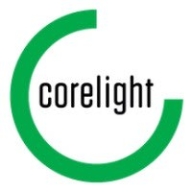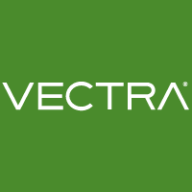

Vectra AI and Corelight are contenders in the network security solutions space. Vectra AI seems to have the upper hand due to its advanced AI-driven alert management capabilities.
Features: Vectra AI offers capabilities like advanced alert management that consolidates alerts into manageable incidents, captures network metadata at scale for enhanced context, and provides functionalities like Cognito Recall and Cognito Detect for improved visibility. Corelight integrates with Zeek for robust open-source traffic analysis, facilitates easy deployment, and enables detailed traffic insights.
Room for Improvement: Vectra AI needs improvements in integrating with external solutions and enhancing its user interface for better engagement. Users seek better logging and visibility on host-driven attacks. Corelight, despite its open-source strengths, requires additional feature development and ease of use improvements. Its complexity can overwhelm and complicate pricing.
Ease of Deployment and Customer Service: Vectra AI is mainly deployed on-premises with hybrid options, boasting strong technical support that enhances customer satisfaction. Corelight, also primarily on-premises, benefits from excellent technical support due to its smaller size, although its scalability might face challenges as demand grows.
Pricing and ROI: Vectra AI's high pricing reflects its comprehensive offerings, delivering a good ROI by reducing attack response time. However, it is less accessible for smaller budgets. In contrast, Corelight's pricing is more affordable and open-source, appealing to technically adept users, though additional investments may be required to maximize its value.
| Product | Market Share (%) |
|---|---|
| Vectra AI | 15.6% |
| Corelight | 4.3% |
| Other | 80.1% |


| Company Size | Count |
|---|---|
| Small Business | 9 |
| Midsize Enterprise | 10 |
| Large Enterprise | 27 |
Corelight is the most powerful network visibility solution for information security professionals. We provide real-time data that organizations use to understand, detect, and prevent cyber attacks. Our solution is built on Zeek, the powerful and widely-used open source monitoring framework.
Vectra AI enhances security operations by pinpointing attack locations, correlating alerts, and providing in-depth visibility across attack lifecycles, ultimately prioritizing threats and improving incident responses.
Vectra AI integrates AI and machine learning to detect anomalies early and supports proactive threat response. Its features like risk scoring, alert correlation, and streamlined SOC efficiency are supplemented by integration with tools like Office 365. Users highlight integration, reporting, and customization challenges, alongside limitations in syslog data and false positive management. They seek enhancements in visualization, UI, TCP replay, endpoint visibility, and tool orchestration, with requests for improved documentation, licensing, and cloud processing innovation.
What are the key features of Vectra AI?In industries like finance, healthcare, and critical infrastructure, Vectra AI is crucial for threat detection and network monitoring. Entities use it for identifying anomalous behaviors and enhancing cybersecurity by responding to network activities and analyzing traffic for potential breaches. It operates on-premises and in hybrid cloud settings, enabling threat detection without endpoint agents and supporting compliance and policy enforcement.
We monitor all Network Detection and Response (NDR) reviews to prevent fraudulent reviews and keep review quality high. We do not post reviews by company employees or direct competitors. We validate each review for authenticity via cross-reference with LinkedIn, and personal follow-up with the reviewer when necessary.